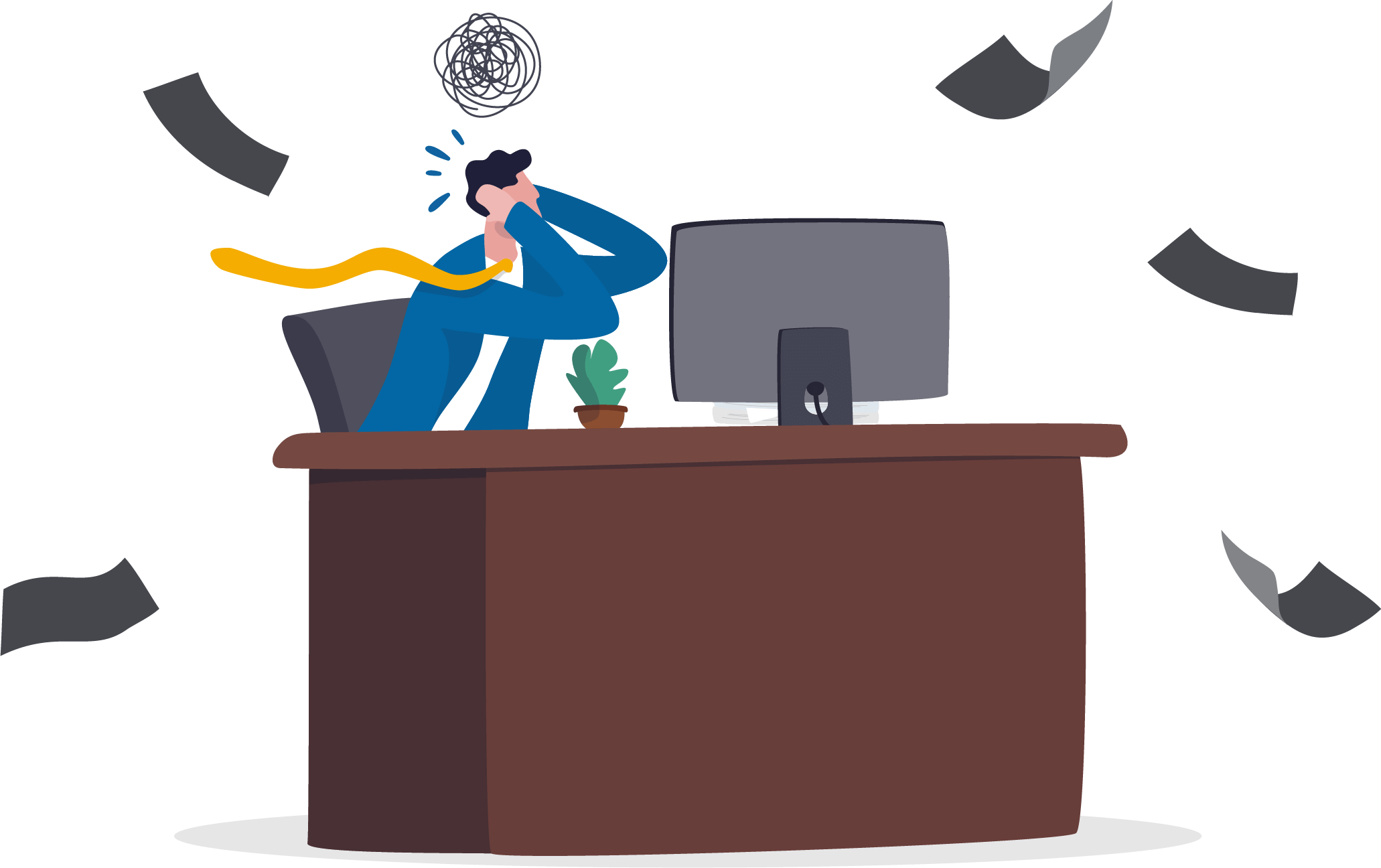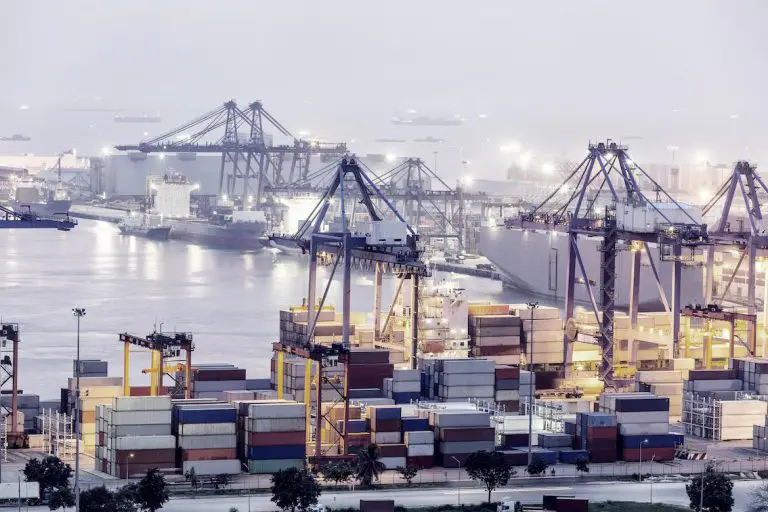Table of contents
Table of contents- Stock Replenishment: What It Is and Strategies For Success
- Stock replenishment – How to make your inventory work harder
- What is stock replenishment?
- Why is stock replenishment important?
- The main benefits of effective replenishment include:
- How does stock replenishment work?
- Methods of stock replenishment
- Prevention is always the best cure!
- Stock replenishment best practices
- 1. Ownership & accountability – determine who’s in the driving seat
- 2. Don’t underestimate the importance of good data
- 3. Forecasts are your friends
- 4. Learn from your mistakes
- 5. Deploy the right tools for the job
- Stock replenishment takeaways
- Stock Replenishment FAQ
Stock replenishment – How to make your inventory work harder
Stock replenishment is a dark art. Master this essential supply chain conundrum & you will be rewarded generously. However, get this wrong and you will be duly punished.
Now, let’s start with the basics. By this, I mean our favourite supply chain clique: replenishment is all about getting the right stock in the right place, at the right time.
If we’ve learned anything from the last few years, availability is king. And against the backdrop of upheaval, fast and efficient replenishment must happen if you don’t want to fade into insignificance.
So how can you make sure it does? What can you do to streamline your replenishment process?
In this guide, we are going to dive into the topic of replenishment. No doubt, many of the topics we cover will be familiar. But hopefully, there are few gems in here to help you not only boost availability but also slash costs in the process.
So, lets crack on…
What is stock replenishment?
Stock replenishment is the process of moving inventory throughout the supply chain to satisfy customer demand on time & in full.
Inventory replenishment, stock replenishment, shelf replenishment or even store replenishment– call it what ever you will. This is a key facet of inventory management that helps to keep inventory balanced while maintaining optimal levels of availability.
The goal here is keep products flowing.
From reordering materials or products for production, moving them from central distribution centres to regional & local locations or even stocking up your webshop, the success of operation hangs on your ability to replenish stock effectively.
Most businesses don’t have the working capital to stock every SKU to the levels required to attain 100% availability.
Instead, they balance the costs of holding stock e.g., warehouse costs, opportunity costs and cashflow limitation, with the risk of not having enough e.g., missed sales targets or costly backorders.
A good replenishment process will keep your shelves full and your finance team smiling. A bad replenishment process will cause nothing but headaches.
Why is stock replenishment important?
Let’s not beat around the bush. Inefficient stock replenishment will have an enormous impact across your business.
You might lose sales if you haven’t got the stock to satisfy orders. Equally, you might have to stomach excess costs or markdowns if you have too much stock.
Overstocking can seem like an easy solution to a complex problem but is often the more expensive choice.
The more effective you are in methods of replenishment, the more efficient the flow of stock is through your business and along the supply chain.
The higher the availability of stock, the greater the service levels in your business. And the happier your customers are as a result.
Your stock replenishment process can dramatically impact exposure to risk and the security of your wider financial situation
The main benefits of effective replenishment include:
1. Stock-out prevention
There will always be factors outside of your control. Maybe, you are hit by supply shortages and there is nothing you can do. Or perhaps, your products become a Tik Tok sensation overnight and you are hit with a wave of unexpected demand. You might be able to swallow the occasional stockout.
But what if this is not the case? What if your stock out is the consequence of poor planning?
A customer trying to spend money with you, and not being able to, is a problem. Every one of us will have looked at an item on the internet and seen the dreaded ‘sold out’ message.
The next port of call is simply another provider.
Your customer can do this within a few clicks. The strength of loyalty to your brand hinges on your ability to deliver what they want, when they want it. To put a number on it, a recent survey highlighted that poor availability costs American retailers a shocking $200 billion every year!
But even if the customer is willing to wait, how long until they grow impatient?
Few businesses can claim to have successfully built an empire on backorders. A customer waiting longer than anticipated for an order, and then not receiving it at all leaves an even worse taste in the mouth.
So, if you are weighing your replenishment process, ask yourself this: how many orders do you take that you can’t fulfil immediately? And what do you do if you can’t get the stock?
Both backorders and stockouts are a cause of frustration for your customer. But effective replenishment is a clever way to keep your customers happy.
2. Minimise overstock
Like not having enough inventory, overstocking can also impact your bottom line.
Replenishing stock too early or without regard to customer demand can cause a build of stock in the wrong places.
Now, here is where the games really begin!
Surplus stock is a big problem. If you don’t believe me, click here to read our article on excess stock.
In short, carrying inventory you do not need is expensive. It ties up your working capital & it leaves you exposed to the risk of obsolescence.
Afterall, lots of products held up in stock have expiration dates. Inventory that might become unsellable if it sits too long, including food and beverages or cosmetics products.
But even those without could be replaced by newer iterations.
Your customers won’t accept mouldy fruit. And whether its clothes or car parts, who wants last season’s style?
Having a smart inventory replenishment process can prevent this nightmare from become a reality!
3. Reduce shipping costs
Moving stock throughout your operation is expensive. It’s even more expensive if you have pay for it twice!
Not utilising the space on every pallet, in every shipment can mean you’re paying to move nothing but air. That’s an expensive hobby your finance team won’t thank you for.
Equally, having to fork out for internal transfers or expedited orders because your stock is sat in the wrong place, will not win you employee of the month.
With an effective replenishment strategy, you can ensure that every pallet, every container & every order’s optimised to make the most of the space available. And this is a sure-fire way to remain as efficient as possible.
That, in turn, will reduce the number of deliveries, and therefore miles on the road. Which will help your carbon emissions and the planet.
All the while maintaining high availability for your number one concern. Your customer.
How does stock replenishment work?
Great, its important to keep stock replenished. That much we can agree!
But now what? How can you streamline your entire approach to replenishment?
In the next section, we will explore some proven replenishment methods & how they work in practice.
Methods of stock replenishment
When it comes to stock replenishment systems, you have two main options: Push or Pull.
The Push method:
This method is a stock replenishment strategy where you rely on forecasts to drive proactive replenishment decisions.
This means using a statistical forecast of future demand to plan how best to push inventory throughout the main distribution centres, regional warehouses, and local branches.
A replenishment system designed in this way will always be broader in nature and may miss the agility and sensitivity to respond to changes in demand.
The push system is also ultimately only as effective as the forecasts on which it’s based. And to build a good forecast, you need data & the tools to transform this into robust insights.
Top tip: Find out if your approach to forecasting is up to scratch with our handy guide to demand planning.
Prevention is always the best cure!
Stock replenishment example #1: The push method in action
Imagine you’re a retailer.
As winter draws out, you’re looking ahead to the new spring line. As you assess demand, your distribution centre needs to start shipping items throughout your network of locations and sales channels. But you also need to worry about how you will keep all your stores stocked up throughout the season.
You have an inescapable number of unknowns. Which lines will sell better than the others? Will all your regions’ demand be the same and follow the same patterns?
But using the push method, you’ll at least have lots of data from related products. And you can use this insight to build a robust forecast on which to guide your replenishment decisions.
Using this replenishment model allows you to make a rational call on how much inventory to ‘push’ to each store or sales channel.
The Pull method
Your other option for a replenishment strategy is the pull method.
This will use demand data to anticipate your customers’ behaviour at the lowest point of the chain.
Often based on actual product sales in each location, the pull system focuses on the immediate and short-term needs of your customers.
One of the advantages of the pull system is that it can handle nuances of individual customer requirements more flexibly than a push system. This may mean that you become better positioned to replenish a specific item in a specific location based on customers exacting wish.
If used with a basic reorder point approach, once your inventory falls below a certain level, you ‘pull’ more inventory from your upstream supply chain.
The problem with this replenishment method is that’s its hard to optimise. Afterall, if you focus on the requirements of each location, you may lose sight of the bigger picture.
For example, with every location fighting for the stock, what do you do if you don’t have enough stock to go around?
Likewise, just because you achieve the optimal level of inventory at one location, what does this mean for the rest of the network? Without considering the overall inventory requirements, many businesses fall into the trap of holding too much stock.
Top tip: How you balance inventory throughout your network, is a weighty decision. And when you have lots of sales channels and locations to worry about, it is easy to get lost. Find out how can navigate your omnichannel operation with our guide to multi-echelon inventory optimisation (MEIO)!
Stock replenishment example #2: The push method in action
Let’s say you sell bicycles.
In your distribution centre you have a large inventory of new bikes as well as all the spares & accessories a customer could want.
With a pull method of replenishment, you carefully track day-to-day demand across your network of shops to determine when stock needs to be replenished & how much inventory should be sent.
Once inventory levels drop below a certain level at any store, it triggers the planning team to send more stock.
Stock replenishment best practices
Next, let’s look at some best practices to ensure the optimal replenishment of stock within your business.
1. Ownership & accountability – determine who’s in the driving seat
Replenishment decisions can be centralised or decentralised.
In centralised environments, the replenishments decisions are made by, you’ve guessed it, a central team. HQ. The nerve centre.
The main benefit here is that the central team has visibility over the whole network & can therefore optimise replenishment across the entire business.
This set up typically allows the business to achieve high levels of availability with a lower level of overall inventory.
In decentralised environments, individual locations typically drive the replenishment decisions.
The advantage here is that a local branch or shop may have a more intimate relationship with your end customer. They’re on the front line and speak with your customer every day. Therefore, they may have better insight than a forecast alone could produce.
It’s easier to optimise replenishment to fit your customers’ needs if you know those needs more intimately.
The problem here, is decentralised replenishment can lead to disjointed planning.
If you allow individual locations to make isolated decisions about inventory requirements, there’s a higher risk of excess across the business.
The bullwhip effect is then more likely to impact operational efficiency.
You also can’t ignore the time & knowledge required to optimise replenishment. Afterall, there are lots of moving pieces to think about. To name a few, you must consider:
- Lead times
- The risk of lead time delays
- Delivery schedules
- Shelf-life limitations
- Operational constraints (e.g., how much stock can you hold in your backroom)
- Active promotions & events
- MOQs & IOQs
- Seasonality
- Local competitor activity
The list could go on & on. But all of which could end up being a distraction from the customer.
2. Don’t underestimate the importance of good data
Effective replenishment requires good data. You need to know how much inventory you have. You need to know where it is. And you need to understand transport and handling costs.
All the above will have a significant impact in whether you replenish little & often or in large volumes, but infrequently.
3. Forecasts are your friends
Robust forecasts can be a life saver on the path to perfect replenishment.
Stock replenishment is about looking forward and working out how much you might or might not sell in the future.
Therefore, your forecasts are critical to making good decisions.
Ask yourself a few questions to help your strategy:
1. Are your forecasts responsive enough?
2. Is it looking at the right horizons?
3. Do you have the means to identify outliers? And can you manage them accordingly?
4. Can you easily aggregate & disaggregate forecasts to attain the best possible visibility over future demand?
4. Learn from your mistakes
In a perfect world, your replenishment process would seamlessly align supply with demand. You’d never have stockouts and excess stock would be a thing of the past.
You’d operate with the agility and customer intimacy of a decentralised system but with the efficiency of a centralised operation.
Sadly, we don’t live in a perfect world.
There’ll always be imbalances.
Small imbalances, you might accept. But with high levels of excess, backorders or just general uncertainty and inefficiency, it’s important you investigate.
If you don’t understand the cause, you can’t work on a solution:
- Are these mistakes human error? Can you fix these issues with training or tighter processes?
- Has demand changed structurally? If so, how?
- Do you need to rethink your supply strategy?
5. Deploy the right tools for the job
If you only must manage replenishment for one location and a small number of SKUs, you might be comfortable using a spreadsheet.
But as you increase the complexity, spreadsheets soon start to fall short.
You may have to anticipate replenishment for multiple locations? Or, your customers buy across multiple channels and you’re adding another one to the mix?
If you hold frequent events & promotions, this could also play havoc with even the best Excel formula. It’s simply not a robust enough solution to give you long-term stability when it comes to managing stock and replenishment.
This is especially true if you have a wide number of products to plan, and each with vastly different demand behaviour.
Or if your demand is extremely volatile & you need to continually adjust your forecast.
Not having the right tools to manage your stock replenishment will have you up against it before you’ve even started.
Luckily, there’s an answer
The risks of inefficient stock replenishment can be severe. And the fallout can be seen across your entire business.
Sales. Finance. Marketing. Ops. They all suffer if your customer can’t get the products they want. And an unhappy customer can mean a big hit to your bottom line.
It’s therefore a risk you shouldn’t be willing to take as a business.
Optimise your company against stock replenishment pitfalls. Run through the advice in this article and safeguard against the worst-case scenario. Have contingency plans in place.
If you’re struggling to maintain fast & efficient replenishment, Slimstock has helped over 1300 businesses. We’ll help you streamline your process and give you a tool far more accurate and user friendly than a spreadsheet.
See how you could benefit from our supply chain optimisation platform, Slim4.
Stock replenishment takeaways
Basics of Stock Replenishment:
- It’s about getting the right stock in the right place at the right time.
- In the current business environment, efficient replenishment is vital for survival.
Definition and Importance:
- Stock replenishment is the movement of inventory throughout the supply chain to meet customer demand.
- Its goal is to keep products flowing and balance the costs and risks associated with inventory levels.
- Inefficient replenishment can cause significant sales losses or excessive costs.
Benefits of Effective Replenishment:
Stock-out Prevention: Ensuring products are available to meet demand avoids the risk of customers switching to another provider. The lack of availability can cost businesses billions.
Minimize Overstock: Avoiding unnecessary stock can save money and reduce the risk of unsellable inventory, whether due to expiration or being out of style.
Reduce Shipping Costs: Efficient replenishment ensures optimal space utilization in shipments, reducing costs and environmental impact.
Stock Replenishment Mechanisms:
- The process can be streamlined using different replenishment methods.
- Two main systems: Push and Pull.
Push Method: Based on forecasts to drive proactive replenishment decisions, which means it’s reliant on accurate forecasting and may lack agility.
Tools and Tips:
- Effective forecasting tools and methods are crucial for a successful push system.
- Businesses should regularly evaluate their forecasting approach to ensure optimal replenishment.
- By understanding the importance of stock replenishment and employing effective methods and tools, businesses can optimize their inventory levels, reduce costs, and better meet customer demands.
Stock Replenishment FAQ
What is inventory replenishment?
Inventory replenishment is the process of restocking inventory at a distribution centre, regional warehouse, or local branch. Typically, this involves monitoring inventory levels, forecasting future demand and determining the most economic order quantity. The goal of inventory replenishment is to ensure that items are always available to customers while minimizing the cost of holding excess inventory.
How do you know when to replenish a stock?
There are a few different methods for determining when to replenish a stock. These include the following approaches:
1. Reorder Point;
2. Safety Stock consumption;
3. Economic Order Quantity (EOQ);
4.ales forecasting and data analysis;
Ultimately, the best method for replenishing stock will depend on the specific circumstances of your business.
What are the two inventory replenishment strategies?
As we have covered in this article, the two main inventory replenishment strategies include the push and pull methods.
Both strategies have their own advantages and disadvantages, and the choice of strategy will depend on the specific circumstances of the operation in question.
How do you manage stock replenishment?
There are several steps which typically make up the replenishment process:
1. Determine your inventory strategy & parameters;
2. Set reorder points based on the given target service level, lead time, consumption rate, and 3. safety stock requirement;
3. Monitor inventory levels against demand driven forecast or current stock levels;
4. Place replenishment orders as soon as inventory levels dip below the reorder point
5. Review, adjust & optimise replenishment process to attain further operational efficiency improvements.







